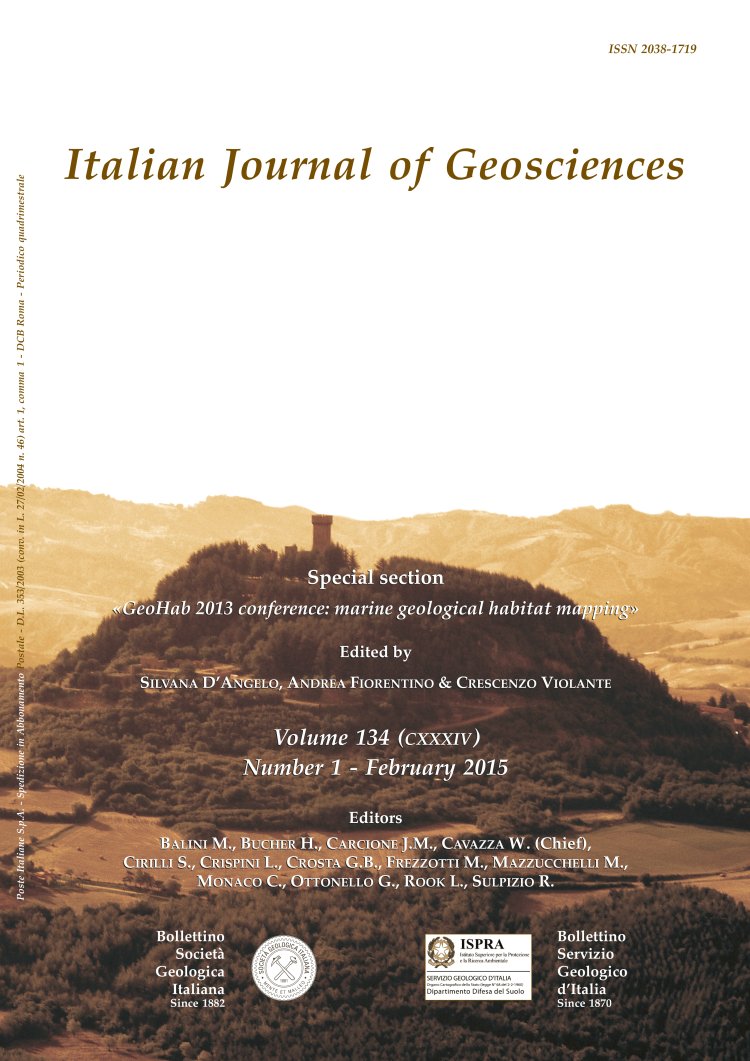
ERT geophysical surveys contributing to the reconstruction of the geologicallandscape in high mountain prehistorical archaeological sites(Plan di Modzon, Aosta Valley, Italy)
Cesare Comina (*), Maria Gabriella Forno (*), (**), Marco Gattiglio (*),Franco Gianotti (*), Luca Raiteri (***) & Luigi Sambuelli (****)
(*) Dipartimento di Scienze della Terra, Università di Torino, Via Valperga Caluso, 35 - 10125 Torino, Italy. Tel: +39 011 6705173, fax: +39 011 6705317; e-mail: cesare.comina@unito.it
(**) NatRisk Interdipartimental Centre, Università di Torino, Via Leonardo da Vinci, 44 - 0095 Grugliasco.
(***) Regione Autonoma Valle d'Aosta, Soprintendenza per i beni e le attività culturali, Piazza Roncas, 12 - 11100 Aosta.
(****) Dipartimento di Ingegneria dell'Ambiente, del Territorio e delle Infrastrutture, Politecnico di Torino, Corso Duca degli Abruzzi, 24 - 10128 Torino, Italy.
Volume: 134 (2015) f.1
Pages: 95-103
Abstract
One of the few examples of high mountain prehistorical archaeological sites in northern Italy has been discovered within the so called Plan di Modzon area, at 2300 m a.s.l., in the Aosta Valley (Western Alps). This area shows interesting geological features and morphological evidence which have been recently linked to a wide Deep-Seated Gravitational Slope Deformation (DSGSD). A probable filled lake and the presence of buried landforms have been also hypno tized on the basis of geological observations, resulting in the need for new devoted surveys to confirm these hypotheses. A better and comprehensive understanding of the geological evolution of the area is indeed necessary to allow a precise reconstruction of the environments in which man has inhabited these territories. Combined Electric Resistivity Tomographies (ERT) and geological surveys have been therefore used to better define the occurrence and nature of morphological evidence along the western slope of the filled lake, in which one of the archaeological sites has been discovered and excavated. The outcomes of the integration of the two surveys is a more refined definition of the geological forms, in respect to the one previously assumed on the basis of surface surveys only. Indeed, ERT revealed buried zones with low resistivity associable to the presence of sliding surfaces and also showed the geometry and thickness of the sediments within the filled lake. Geological surveys also evidenced a DSGSD evolution in the area constrained to Lateglacial, because of the lack of particularly evident gravitative forms, i.e. remodeled by glacial abrasion.
Keywords
electrical resistivity tomography, deep-seated gravitational slope deformation, high mountain archaeological site.
Get Full Text